
iCab is a web browser for Mac OS by Alexander Clauss, derived from Crystal Atari Browser (CAB) for Atari TOS compatible computers. It was one of the few browsers still updated for the classic Mac OS prior to that version being discontinued after version 3.0.5 in 2008; Classilla was the last browser that was maintained for that OS but it was discontinued in 2021.

Safari is a web browser developed by Apple. It is built into Apple's operating systems, including macOS, iOS, iPadOS and VisionOS, and uses Apple's open-source browser engine WebKit, which was derived from KHTML.
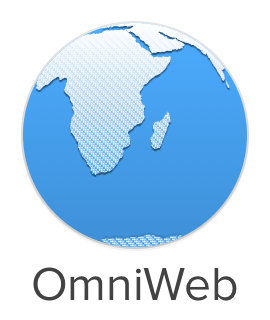
OmniWeb is a discontinued web browser developed and marketed by The Omni Group exclusively for Apple's macOS operating system. Though a stable version is no longer maintained, it is still available as a free download, and unstable versions are still being released.

Mail is an email client included by Apple Inc. with its operating systems macOS, iOS, iPadOS and watchOS. Mail grew out of NeXTMail, which was originally developed by NeXT as part of its NeXTSTEP operating system, after Apple's acquisition of NeXT in 1997.
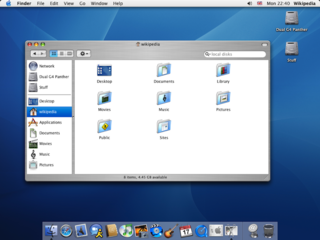
Mac OS X Panther is the fourth major release of macOS, Apple's desktop and server operating system. It followed Mac OS X Jaguar and preceded Mac OS X Tiger. It was released on October 24, 2003, with the retail price of US$129 for a single user and US$199 for a five user, family license.
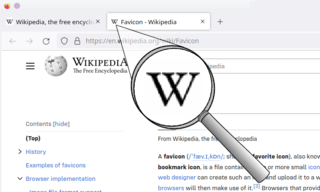
A favicon, also known as a shortcut icon, website icon, tab icon, URL icon, or bookmark icon, is a file containing one or more small icons associated with a particular website or web page. A web designer can create such an icon and upload it to a website by several means, and graphical web browsers will then make use of it. Browsers that provide favicon support typically display a page's favicon in the browser's address bar and next to the page's name in a list of bookmarks. Browsers that support a tabbed document interface typically show a page's favicon next to the page's title on the tab, and site-specific browsers use the favicon as a desktop icon.
MHTML, an initialism of "MIME encapsulation of aggregate HTML documents", is a Web archive file format used to combine, in a single computer file, the HTML code and its companion resources that are represented by external hyperlinks in the web page's HTML code. The content of an MHTML file is encoded using the same techniques that were first developed for HTML email messages, using the MIME content type multipart/related. MHTML files use an .mhtml or .mht filename extension.

Internet Explorer for Mac was a proprietary web browser developed by Microsoft for the Macintosh platform to browse web pages. Initial versions were developed from the same code base as Internet Explorer for Windows. Later versions diverged, particularly with the release of version 5, which included the cutting-edge, fault-tolerant and highly standards-compliant Tasman layout engine.

Dashboard is a discontinued feature of Apple Inc.'s macOS operating systems, used as a secondary desktop for hosting mini-applications known as widgets. These are intended to be simple applications that do not take time to launch. Dashboard applications supplied with macOS included a stock ticker, weather report, calculator, and notepad; while users could create or download their own.

iWork is an office suite of applications created by Apple for its macOS, iPadOS, and iOS operating systems, and also available cross-platform through the iCloud website.
In NeXTSTEP, OPENSTEP, and their lineal descendants macOS, iOS, iPadOS, tvOS, and watchOS, and in GNUstep, a bundle is a file directory with a defined structure and file extension, allowing related files to be grouped together as a conceptually single item.
Rich Text Format Directory, also known as RTFD, or Rich Text Format with Attachments, is a primary document format of TextEdit, an application native to NeXTSTEP and macOS which has also been ported to other versions of Unix. The file format is based on the Rich Text Format, but can also include "attachments" such as images and animations.
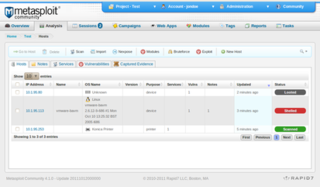
The Metasploit Project is a computer security project that provides information about security vulnerabilities and aids in penetration testing and IDS signature development. It is owned by Boston, Massachusetts-based security company Rapid7.

Time Machine is the backup mechanism of macOS, the desktop operating system developed by Apple. The software is designed to work with both local storage devices and network-attached disks, and is most commonly used with external disk drives connected using either USB or Thunderbolt. It was first introduced in Mac OS X 10.5 Leopard, which appeared in October 2007 and incrementally refined in subsequent releases of macOS. Time Machine was revamped in macOS 11 Big Sur to support APFS, thereby enabling "faster, more compact, and more reliable backups" than were possible previously.
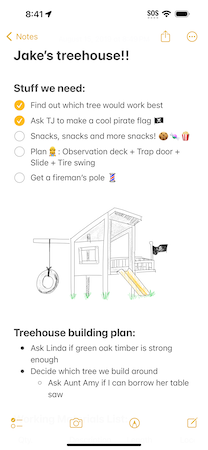
Notes is a notetaking app developed by Apple Inc. It is provided on their iOS, iPadOS and macOS operating systems, the latter starting with OS X Mountain Lion. It functions as a service for making short text notes, which can be synchronized between devices using Apple's iCloud service. The application uses a similar interface on iOS and macOS, with a non-textured paper background for notes and light yellow icons, suggesting pencil or crayon. Until 2013, both applications used a strongly skeuomorphic interface, with a lined, textured paper design; the Mountain Lion version placed this inside a leather folder. This design was replaced in OS X Mavericks and iOS 7.

macOS Sierra is the thirteenth major release of macOS, Apple Inc.'s desktop and server operating system for Macintosh computers. The name "macOS" stems from the intention to unify the operating system's name with that of iOS, watchOS and tvOS. Sierra is named after the Sierra Nevada mountain range in California and Nevada. Its major new features concern Continuity, iCloud, and windowing, as well as support for Apple Pay and Siri.
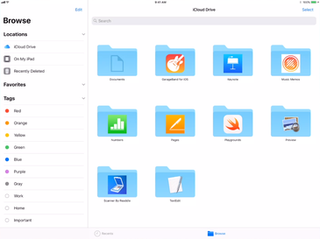
Files is a file management app developed by Apple Inc. for devices that run iOS 11 and later or iPadOS. Discovered as a placeholder title in the App Store just prior to the company's 2017 Worldwide Developers Conference, the app was officially announced at the conference shortly thereafter. Files allows users to browse local files stored within apps, as well as files stored in cloud storage services including iCloud, Dropbox, OneDrive, and Google Drive. It allows for the saving, opening and organization of files, including placement into structured folders and sub-folders. iPadOS and recent versions of iOS are able to drag-and-drop files between Files and other apps, while iOS versions before iOS 15 are limited to drag-and-drop inside Files itself. Further organization can be done through the use of color-coded or custom-named tags, and a persistent search bar allows for finding files inside folders, though not inside other apps. A list view enables different sorting options. The app offers the exclusive playback of high-quality FLAC audio files, and also offers support for viewing text files, images, "Music Memos", and Zip archives, as well as limited support for video.

Rafay Baloch is a Pakistani ethical hacker and security researcher known for his discovery of vulnerabilities on the Android operating system. He has been featured and known by both national and international media and publications like Forbes, BBC, The Wall Street Journal, and The Express Tribune. He has been listed among the "Top 5 Ethical Hackers of 2014" by CheckMarx. Subsequently he was listed as one of "The 15 Most Successful Ethical Hackers WorldWide" and among "Top 25 Threat Seekers" by SCmagazine. Baloch has also been added in TechJuice 25 under 25 list for the year 2016 and got 13th rank in the list of high achievers. Reflectiz, a cyber security company, released the list of "Top-21 Cybersecurity Experts You Must Follow on Twitter in 2021" recognizing Rafay Baloch as the top influencer. On 23 March 2022, ISPR recognized Rafay Baloch's contribution in the field of Cyber Security with Pride for Pakistan award.










